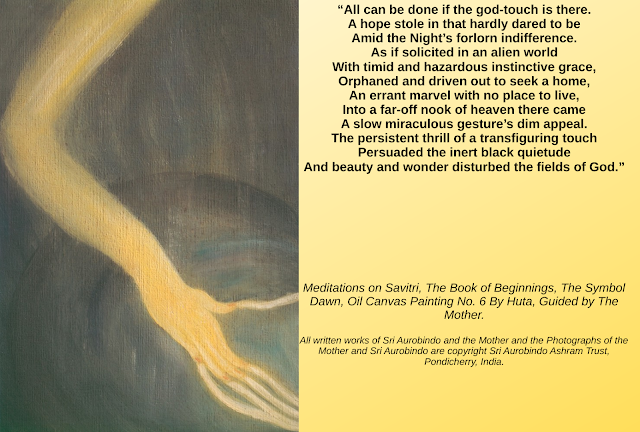A synthesis of Savitri and Theosophy - Painting No 6
"All can be done if the god-touch is there.
A hope stole in that hardly dared to be
Amid the Night’s forlorn indifference.
As if solicited in an alien world
With timid and hazardous instinctive grace,
Orphaned and driven out to seek a home,
An errant marvel with no place to live,
Into a far-off nook of heaven there came
A slow miraculous gesture’s dim appeal.
The persistent thrill of a transfiguring touch
Persuaded the inert black quietude
And beauty and wonder disturbed the fields of God."
A Theosophical meditation:
Sri Aurobindo says that when a man gets touched and motivated by the Divine Will (Ray 1) then every thing becomes possible for such a realized man. Theosophically such is an enlightened and intelligent purpose which is also cooperative, adjusting itself to Divine plan of Hierarchy and fits in with the purpose of the Planetary Logos.
In the Dark Night with its pitiful and sad indifference and in an alien world, a Divine appeal seems like an marvellous straying orphan without a home, coming from a far-off secured corner of heaven. The dark is being persuaded by a thrilling and transfiguring touch of a wandering and dim glowing hand. Huta paints that hand in the inert dark which feels like a God-touch of Divine Will (Ray 1).
Images: Meditations on Savitri paintings no 6 depicting above lines from the Book 1, Canto 1.




Comments
Post a Comment